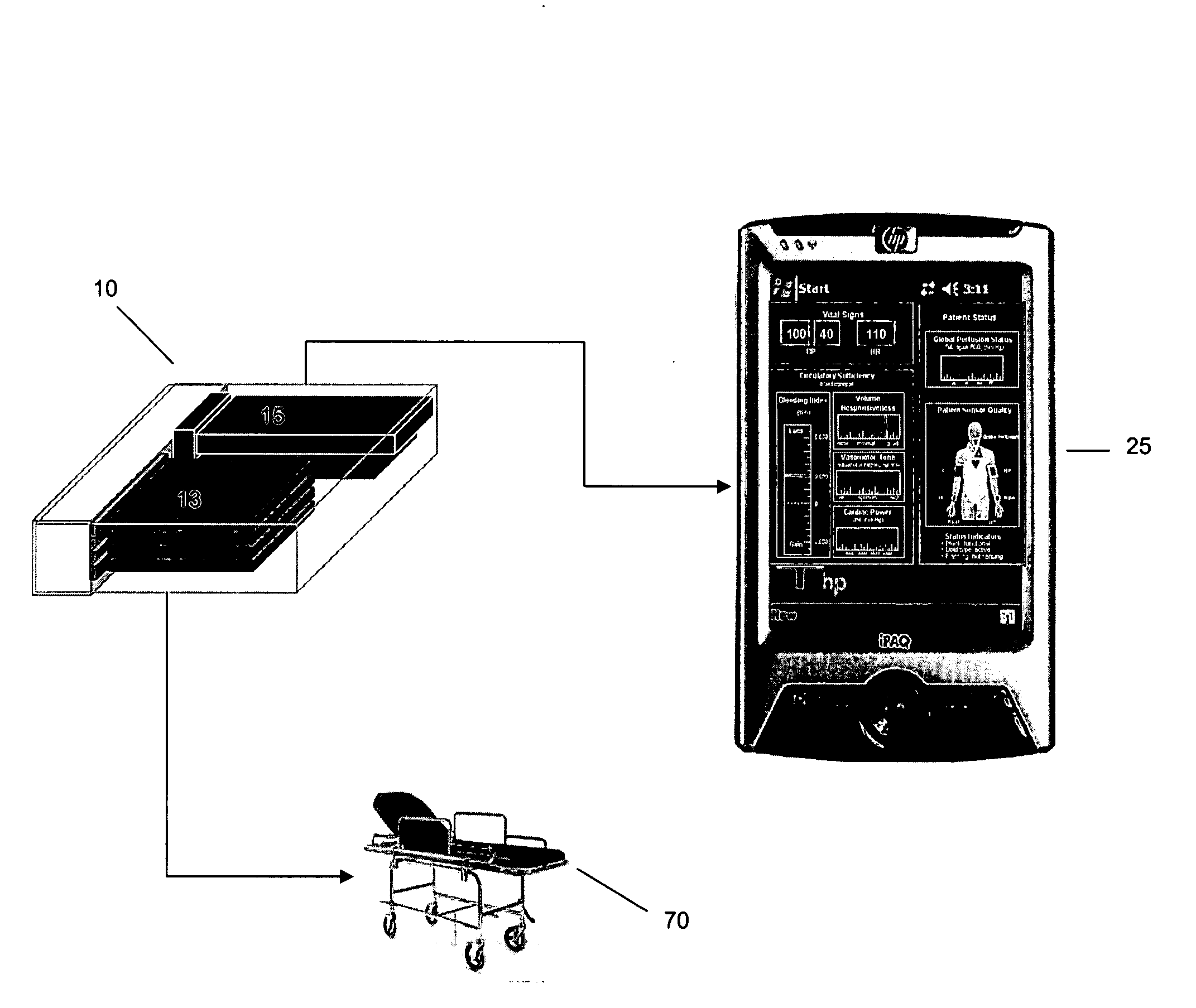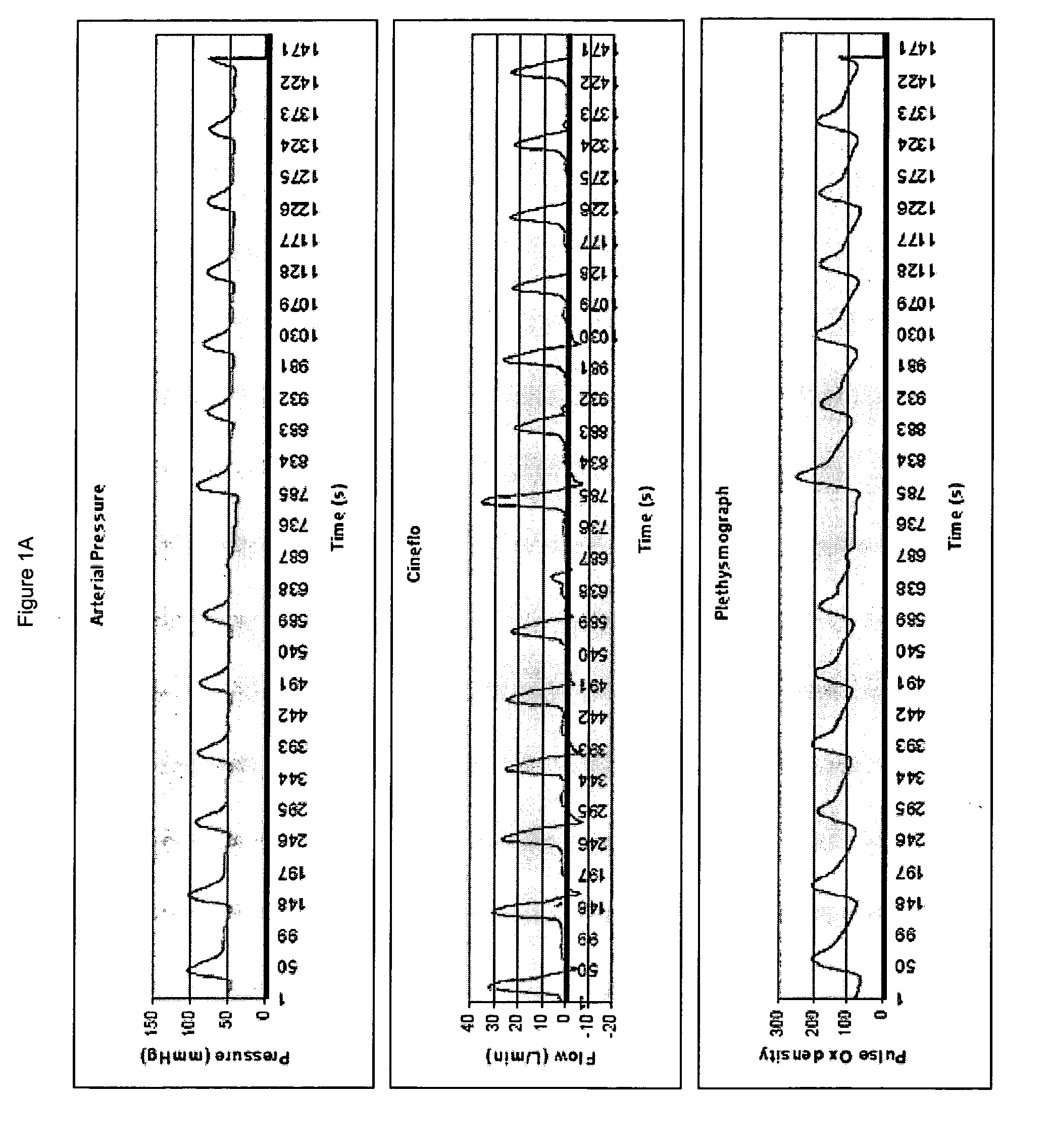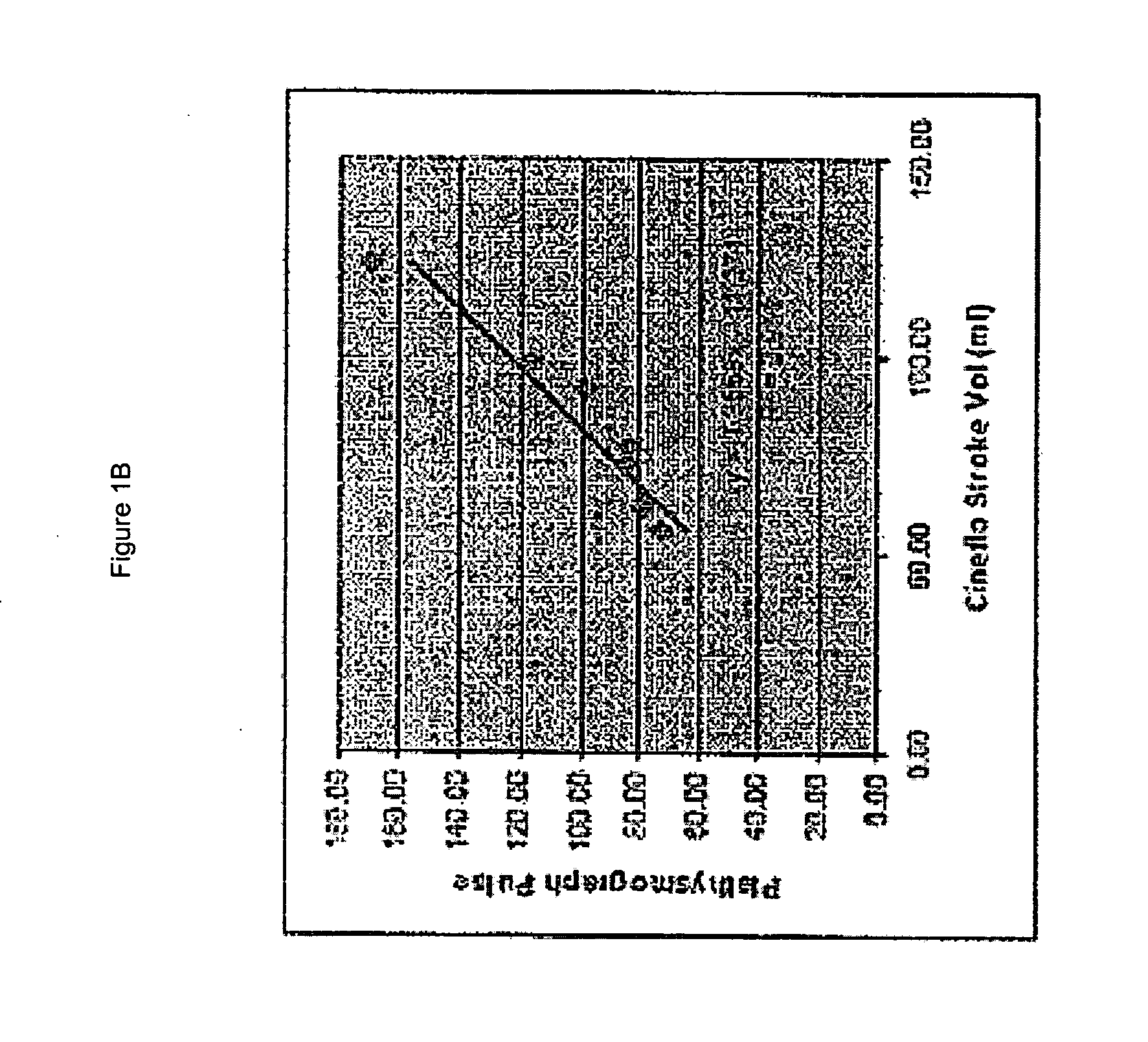Device and system that identifies cardiovascular insufficiency
a technology of cardiovascular insufficiency and diagnostic equipment, applied in the field of diagnostic equipment and systems, can solve the problems of high mortality and morbidity of trauma patients, 150,000 deaths annually, and high risk of developing multiple organ dysfunction syndromes. , to achieve the effect of less sensitive, less accurate, and less sensitive to physiologic changes
- Summary
- Abstract
- Description
- Claims
- Application Information
AI Technical Summary
Benefits of technology
Problems solved by technology
Method used
Image
Examples
example 1
Unattended Monitoring in an Active Individual
[0058] A military war-fighter is in a combat situation in a hot, dry climate such as a desert. The war-fighter is clothed in a military combat uniform and is carrying on his back weapons and packs full of supplies and ammunition. He has not had fluids for more than three hours and is therefore susceptible to dehydration. The claimed device continuously and periodically monitors the soldier. The war-fighter is equipped with a motion sensor somewhere on his person that indicates when a physical motion has been performed initiating data collection. Either software rules applied to the motion sensor signal, software rules applied to the transducer, or a combination thereof provide a data quality indicator software bit to the device rules for when an ample physical motion provides an adequate perturbation to the cardiovascular system. Based on this quality indicator, the claimed continuously-monitoring device utilizes the current sampled sign...
example 2
Unattended or Attended Monitoring of an Immobile Patient
[0060] A patient afflicted with a chronic cardiovascular condition requires home healthcare where a telehomecare service is provided for remote caregiver monitoring. In another instance an individual has an acute cardiovascular condition and requires emergency medical technician assistance. The claimed device, such as the one shown in FIG. 3, is equipped with a compressible cuff (i.e. sequential compression device or SCD), commonly employed in hospitals to limit venous stasis to mimic the perturbation from passive leg raising) that the patient wears around his calf when in bed, on a stretcher or gurney such as the ones shown in FIG. 2B, above. The cuff is automatically inflated periodically to create a perturbation to the cardiovascular system. The device monitors oxygenated hemoglobin levels continuously over five respiratory cycles beginning at the point in time of the perturbation in order to monitor the change of pressure ...
example 3
Attended Immobile Patient Management
[0063] A hemodynamically unstable immobile critical care patient is being continuously monitored in a hospital acute care setting. The patient is spontaneously breathing making a mechanical ventilator unnecessary. A protocol is being administered to correct the patient's hemodynamic instability via a pharmacologic agent based protocol. The compressible cuff is worn around the patient's calf as in Example 2. In addition to a transducer to obtain a measure of the change in arterial pressure, cardiac output, or intravascular flow, other transducers are also captured such as measures of mean arterial pressure (i.e. an automated blood pressure cuff) to enable both output of all traditional vitals and analyses of the contributions of hemodynamic dysfunction such as disclosed in U.S. Pat. No. 6,776,764 to Pinsky. An output may be in the form of a patient dashboard at the bedside, communicated via a wireless communications method to caregiver's hand held...
PUM
 Login to View More
Login to View More Abstract
Description
Claims
Application Information
 Login to View More
Login to View More - R&D
- Intellectual Property
- Life Sciences
- Materials
- Tech Scout
- Unparalleled Data Quality
- Higher Quality Content
- 60% Fewer Hallucinations
Browse by: Latest US Patents, China's latest patents, Technical Efficacy Thesaurus, Application Domain, Technology Topic, Popular Technical Reports.
© 2025 PatSnap. All rights reserved.Legal|Privacy policy|Modern Slavery Act Transparency Statement|Sitemap|About US| Contact US: help@patsnap.com



